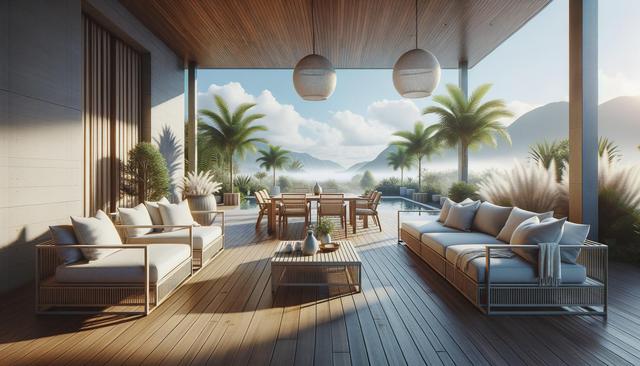
Creating a Comfortable Outdoor Retreat with Patio Furniture
Understanding the Purpose of Your Outdoor Space
Before choosing patio furniture, it’s essential to consider how you plan to use your outdoor area. Whether it’s for quiet morning coffee, hosting weekend barbecues, or creating a reading nook, your intended use will guide your furniture selection. For example, a dining set with ample seating suits those who entertain guests often, while a couple of cushioned lounge chairs may be perfect for a private garden escape. Understanding your needs helps in choosing pieces that are not only functional but also enhance your outdoor experience.
Think about the layout and flow of your patio or backyard. Take measurements to avoid overcrowding, and consider how people will move around the furniture. Creating zones—like a dining area, a lounge space, or a small fire pit corner—can make your outdoor space more organized and enjoyable. Sketching out a plan or using online layout tools can help visualize the arrangement before purchasing any furniture.
Materials Matter: Choosing the Right Construction
Patio furniture comes in a variety of materials, each with its own advantages. Selecting the right material impacts durability, maintenance, and overall appearance. Here are some common choices:
- Aluminum: Lightweight, rust-resistant, and easy to move around. Ideal for humid or rainy climates.
- Teak or Other Hardwoods: Known for their rich color and ability to withstand the elements, though they may require occasional oiling to maintain appearance.
- Wicker: Offers a classic look and is often made with synthetic materials for better weather resistance.
- Steel or Iron: Very sturdy but may need protective coatings to prevent rust.
Consider your local climate when choosing materials. For example, wooden furniture may warp in high humidity, while metal seating can become very hot under direct sunlight. Investing in high-quality, weather-resistant materials ensures longer-lasting furniture and less frequent replacements.
Comfort and Style: Blending Aesthetics with Function
Comfort should be at the forefront of your patio furniture choices. Look for ergonomic designs and consider adding cushions or pillows for extra coziness. Many outdoor cushions are made from quick-drying, UV-resistant fabrics, which help maintain their look and feel even after exposure to the elements. Be sure to choose colors and patterns that complement your home’s exterior and the natural surroundings.
Blending aesthetics with function ensures your outdoor space is both beautiful and usable. Consider matching your patio furniture with existing décor elements, such as outdoor rugs, planters, or lighting. Creating a cohesive look can make your patio feel like a true extension of your home. If you prefer a minimalist design, stick with neutral tones and simple lines. For a more vibrant setting, experiment with bold colors and mixed materials.
Maintenance and Storage Tips
Proper maintenance extends the life of your patio furniture. Even weather-resistant pieces benefit from routine care. Here are a few tips to keep your furniture in good condition:
- Clean surfaces regularly with mild soap and water to remove dirt and pollen.
- Store cushions in a dry, covered space when not in use to prevent mold or fading.
- Use furniture covers during off-seasons or inclement weather to protect from moisture and UV rays.
- Apply sealants or protective coatings as recommended by the manufacturer, especially for wood and metal pieces.
During the colder months, consider storing furniture in a garage or shed. If that’s not possible, stack and cover pieces to minimize exposure. Seasonal maintenance not only preserves appearance but also ensures safety and functionality year after year.
Budgeting and Shopping Smart
Setting a realistic budget for patio furniture helps narrow down choices without compromising on quality. While it may be tempting to opt for lower-cost options, investing in durable, well-crafted pieces often proves more cost-effective in the long run. When budgeting, consider the number of pieces you need and whether you plan to add to your collection over time.
Take advantage of seasonal sales, especially at the end of summer, when retailers often discount inventory. Online marketplaces can also offer competitive pricing, but always read reviews and check return policies. Shopping in-person allows you to test comfort and inspect quality firsthand, which can be helpful for larger purchases like sofas or dining tables.
Modular furniture sets can be a flexible and budget-friendly option. These allow you to rearrange seating layouts easily or expand your set as needed. Additionally, starting with a few key pieces and adding accessories like umbrellas, side tables, or storage benches over time can help manage costs while still achieving a complete look.